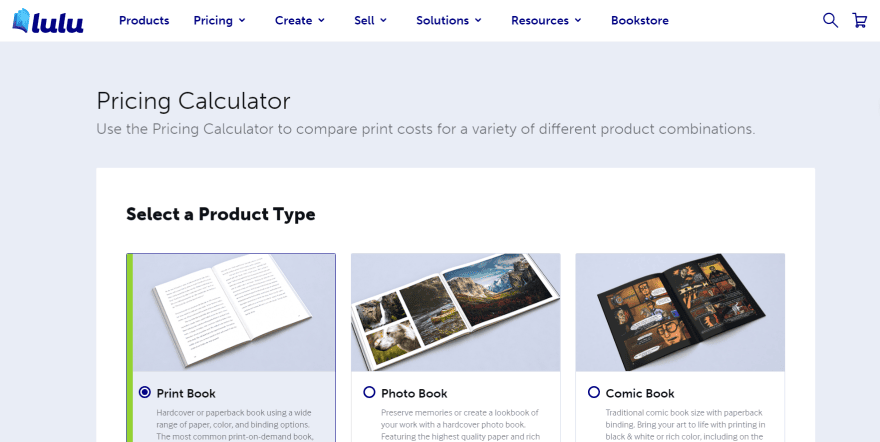Selling low-content books on sites like Amazon is a great way to make money online. Such books are easy to create, and there is a large market for them.
If you are thinking of starting a low-content book business, you need to decide where you want to sell your books. There are many different platforms available, so it is important to choose the right one for you.
In this blog post, we will discuss the 13 best places to sell low content books. We will cover each platform in detail, and we will provide tips on how to get started. So whether you are a beginner or a seasoned pro, you will find this post helpful.
What are low content books?
Low-content books are books that have minimal or no content on the interior pages and are designed to be filled in by the user.
These books often have a specific purpose, such as diaries/journals, coloring books, planners, prompt journals, log books, crafting templates, or activity books.
Instead of traditional paragraphs or chapters, low-content books may feature prompts, templates, or blank spaces for users to fill in or engage with. The focus is on providing a structured format or creative outlet for the reader.
Where to sell low content books online
Before you proceed, if you haven’t created your book yet, I highly recommend using the following combination of tools to help you scale your low content business relatively fast:
- Book Bolt for whipping out interior designs for different types of low content minutes within minutes
- Canva Pro for creating stunning designs fast even when you are not a designer
- Creative Fabrica for sourcing creative assets for your creative needs
Alternatively, you can read our Book Bolt review here
1) Kindle Direct Publishing (KDP)
Kindle Direct Publishing (KDP) is undoubtedly the most popular platform for self-publishing low-content books.
With KDP, you can publish both paperback and hardcover books, allowing you to cater to a wide range of readers.
One advantage of KDP is its wide reach, as your books can be listed in 12 Amazon markets, including Amazon.com and Amazon.co.uk.
When it comes to publishing low-content books on Amazon Kindle, there are a few things to keep in mind:
- Low-content books on Amazon do not require an ISBN. However, if you want to use your own ISBN or publish without an ISBN, you have the option to do so.
- These types of books are not eligible for the free KDP ISBN.
- No content or low-content books do not qualify for Expanded distribution
Also, note that the Look Inside feature and back cover thumbnail are not supported for low-content books published without an ISBN. However, you can use A+ Content to add images of your book’s interior to give buyers a preview of what it looks like.
Amazon A+ Content is a feature that allows authors and publishers to enhance their book detail pages on Amazon with rich multimedia content. It provides an opportunity to go beyond the standard product description and engage potential readers with visually appealing and informative content.
With A+ Content, you have the ability to create a customized layout for your book’s detail page using different modules. These modules can include various elements such as images, text, comparison charts, author backgrounds, cover art, and book samples.
2) Sellfy
Sellfy is an eCommerce platform that allows creators to sell digital products such as ebooks, music, videos, and more.
While it is primarily used for digital products, it is possible to sell physical goods like low content paperback books as well, though you might have to work with an external print-on-demand service.
Sellfy’s POD is majorly geared towards apparel, and the only product they mentioned in the low-content niche was the Spiral notebook. This is a product you can add to your store and start selling right away, and Sellfy will take care of the printing, and shipping.
Sellfy may be a great option to use on top of Amazon Kindle, as it provides you with a wide range of features to make your selling process smooth and successful including customizable store design, secure payment processing, and marketing tools.
You can create discount codes, run promotional campaigns, and offer upsells to encourage customers to buy more of your low-content books. Sellfy also integrates with popular email marketing platforms, enabling you to build and engage with your customer base through email campaigns.
With detailed analytics and reporting, you can track your sales, customer behavior, and revenue trends. This data helps you make informed decisions and optimize your marketing strategies to maximize your selling potential.
3) Etsy low content books
Etsy is a marketplace for handmade and vintage items, but it also allows sellers to sell low content books. You can set your own prices and sell to a global audience.
To sell your books on Etsy, you simply need to create an account and list your books for sale. Etsy will then take a commission on each sale.
To sell low-content paperbacks on Etsy, you need to work with a Print-on-Demand service that works with Etsy. These services allow you to upload your designs, and when a customer places an order, the service prints and ships the book directly to the customer.
Some popular print-on-demand services that integrate with Etsy include Printful, Printify, and Gooten. This is the easiest and most economical way to sell paperback books on Etsy.
However, if you prefer more control over the printing process, you can work with a local printer or a professional printing service. When you receive an order on Etsy, you can then forward the customer’s information and book specifications to the printer, who will produce and ship the book directly to the customer.
This method may require more coordination and communication with the printer but offers flexibility in customization and quality control.
4) LuLu
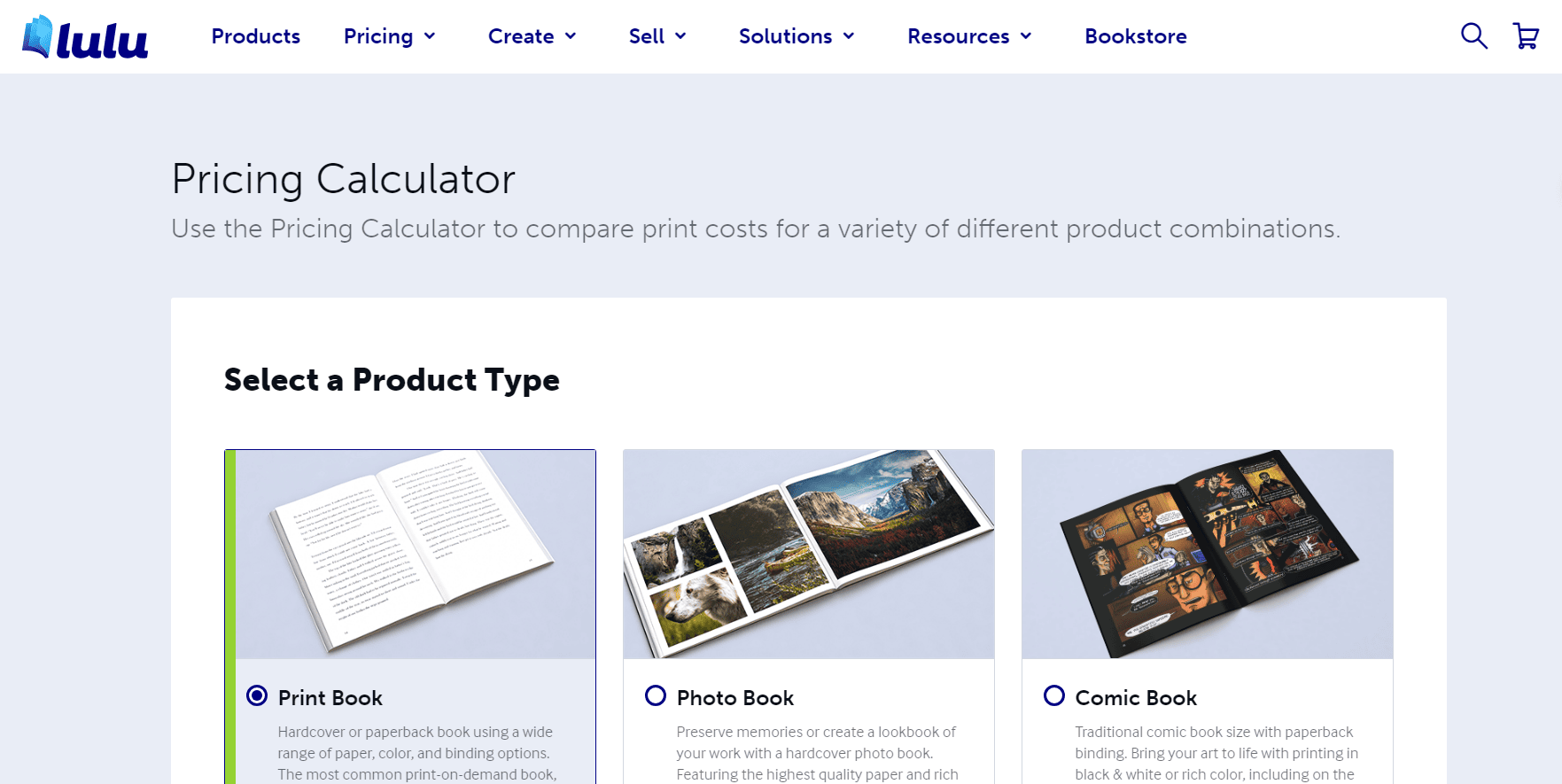
Lulu is an online self-publishing book and ebook company that allows users to create and self-publish their own books. They offer a range of services including print-on-demand and eliminate the risk and hassle of inventory and fulfillment
While Lulu does not specialize in low-content books, they do offer the ability to publish and print low-content books.
Creators can sell low-content books on Lulu’s online bookstore and on their own websites.
In addition to selling on LuLu’s platform, you can also opt for global distribution, which enables your books to be available on other online retailers, such as Amazon, Barnes & Noble, Google Play, and Apple Books.
Like Kindle Direct Pricing, Lulu has a detailed pricing page for calculating your costs and projecting revenues per book. You can choose from options like hardcover or paperback books, photo books, comic books, magazines, yearbooks, and calendars. Each product has different features and paper options.
In my opinion, Lulu seems to be a bit pricey though.
5) Shopify
Shopify is an e-commerce platform that allows users to create and manage online stores.
Shopify, as a popular e-commerce platform, provides excellent tools and resources for selling books and managing transactions. To get started, you can create a Shopify store and set up your book listings.
To sell low-content books on Shopify as paperbacks, you’ll need to set up your Shopify store and choose a theme that represents your brand.
Next, look for a print-on-demand (POD) service that integrates with Shopify. You will need to upload and publish your products over at the POD website. A good option is Printify.
Now it’s time to integrate your Shopify shop with your print-on-demand service. Go to the apps section on your store, and choose an app belonging to the service you chose. This app will allow you to sync your products and manage orders seamlessly.
When customers place orders on your Shopify store, the POD service will take care of the printing, binding, and shipping processes. Meanwhile, you should focus on providing exceptional customer service and support to maintain customer satisfaction.
6) Barnes & Noble Press
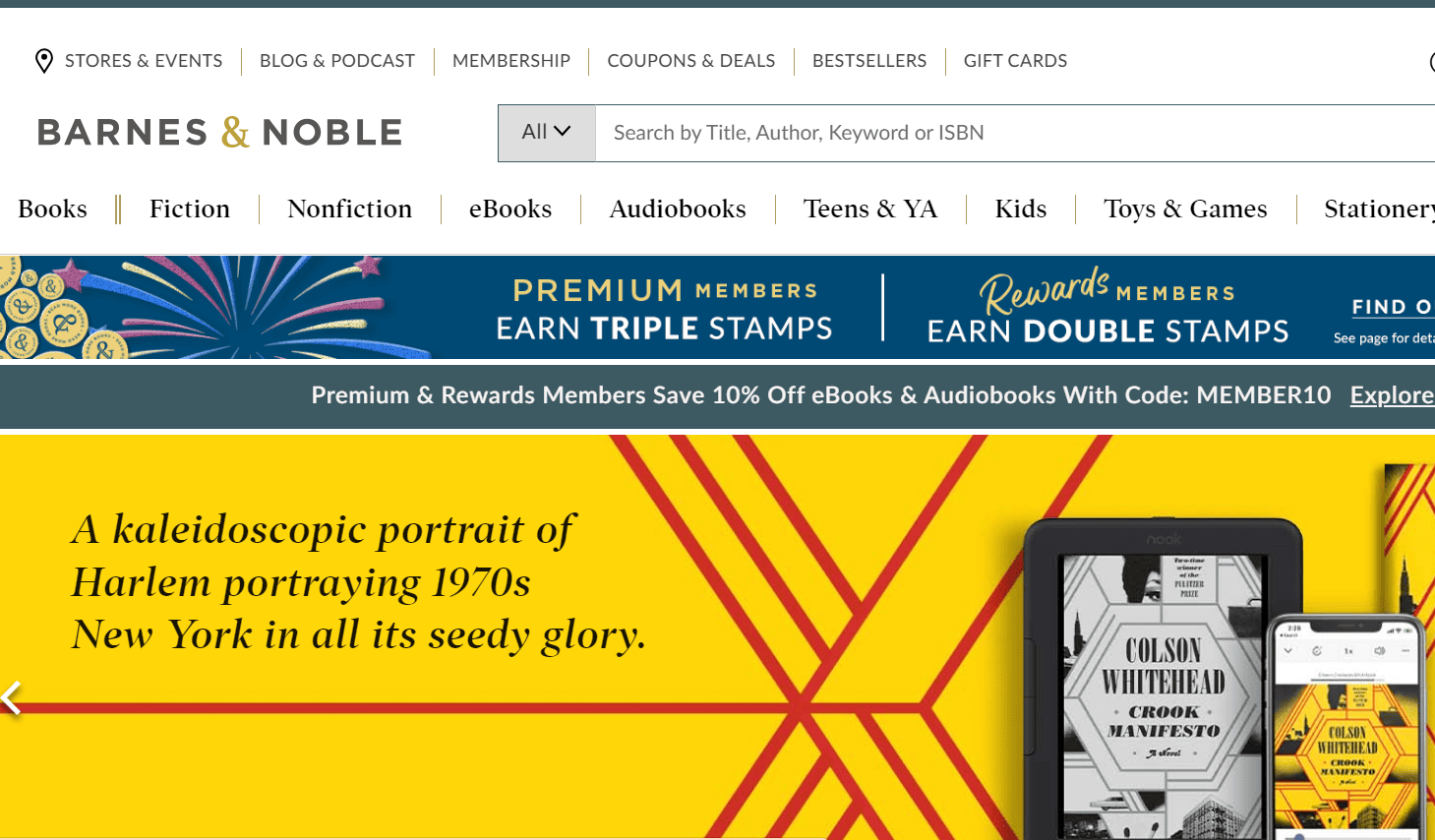
Barnes & Noble is a leading American bookseller that operates both brick-and-mortar retail stores and an online bookstore. The company was founded in 1886 and is headquartered in New York City.
Barnes & Noble operates approximately 600 retail bookstores across the United States, making it the bookseller with the largest number of retail outlets in the country. The company also operates an e-commerce website, BN.com, which offers a wide selection of books, eBooks, magazines, toys, games, music, DVD and Blu-ray, and related products and services.
This makes it another great option on where to sell low content books.
7) Redbubble
Redbubble is a popular online marketplace that allows independent artists and creators to sell their designs on various products such as apparel, home decor, accessories, low-content books such as journals, notebooks, adult coloring books, and more.
To sell low content books on Redbubble, you need to create an account, upload your designs to the platform, select and customize product types, and list your books. Redbubble will handle the printing, production, and shipping of the products to customers.
This platform also allows you to set your own prices.
When creating your designs, make sure to follow Redbubble’s guidelines for file formatting and image resolution. You can also optimize your product listings by using relevant tags and descriptions to improve visibility and attract potential customers.
Note that Redbubble is primarily a platform for selling artwork, and low-content books may not be as popular as other products such as stickers, art prints, and clothing. However, if you have a strong following or niche audience, you may be able to find success with the low-content publishing business.
8) IngramSpark
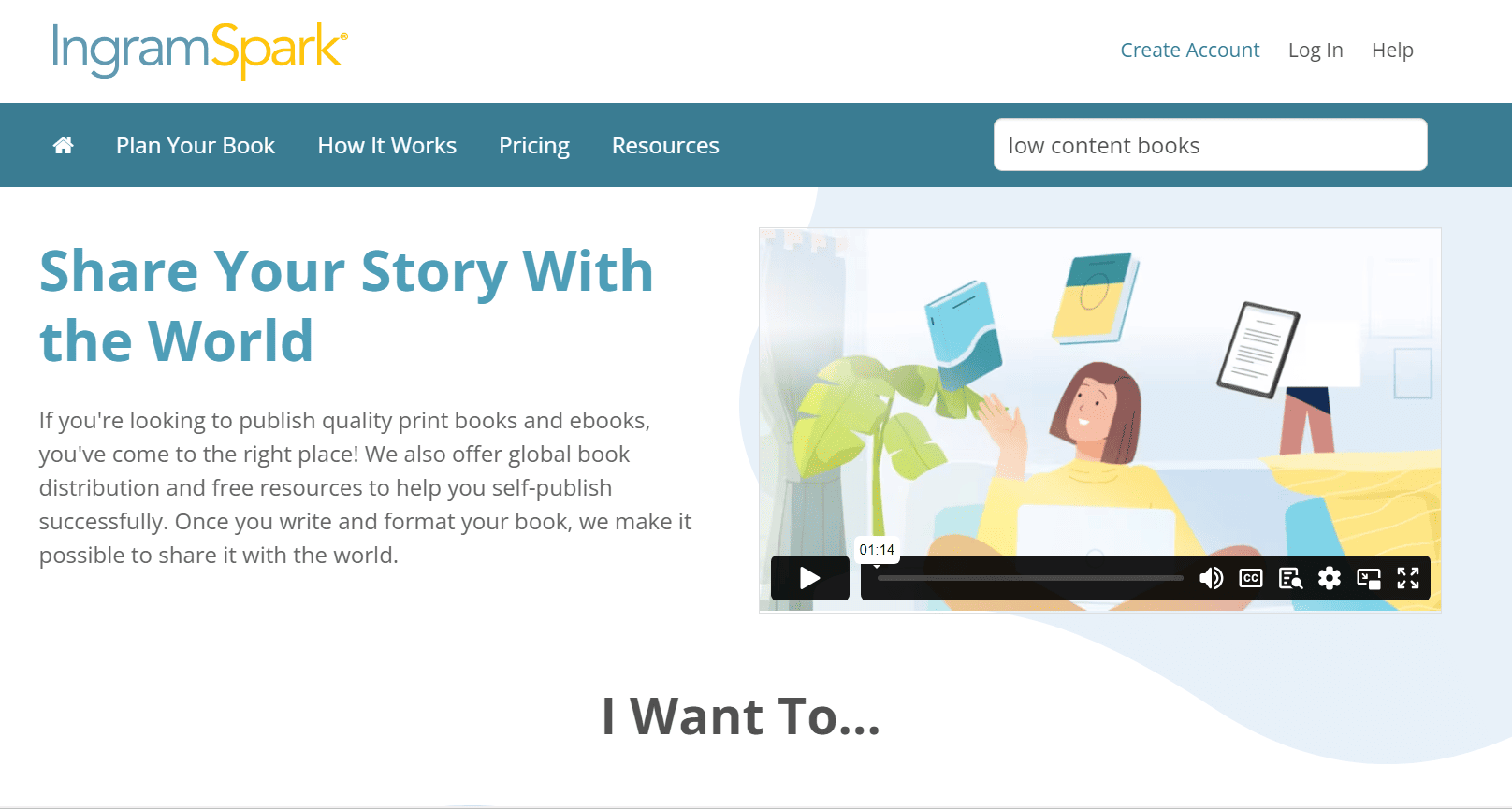
IngramSpark is a popular choice for self-published authors looking to expand their reach beyond Amazon. The platform provides global distribution, ensuring that your low-content books reach bookstores, libraries, and online retailers worldwide.
However, it’s important to note that IngramSpark has certain restrictions when it comes to low-content books. In 2020, they had stopped accepting books with more than 10% blank pages, which means lined journals and sketchbooks may not be eligible for distribution through IngramSpark.
That might have changed though, so be sure to do your research, or message support.
9) Blurb
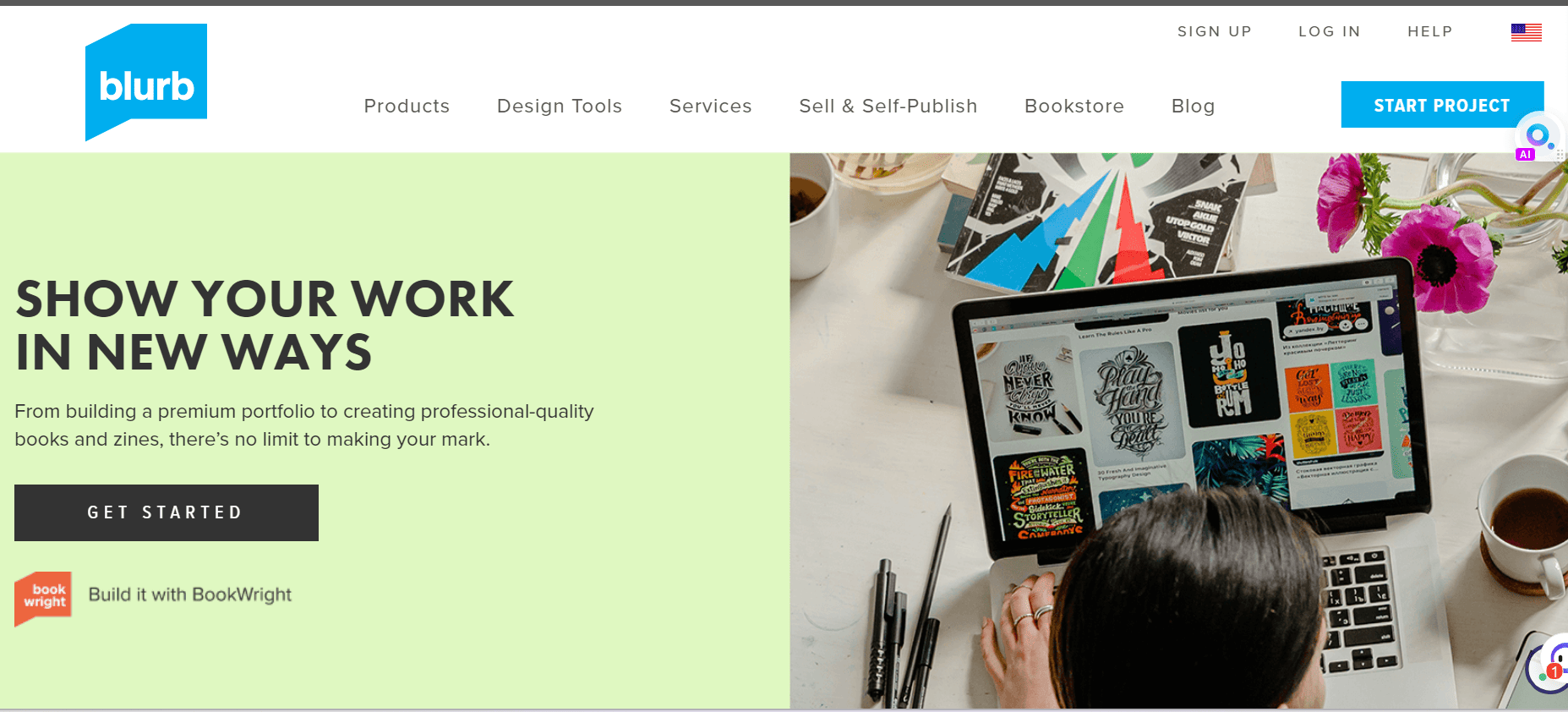
Blurb is a platform that specializes in creating and selling custom books. It offers a range of options for self-published authors, including low-content books.
With Blurb, you can easily design and customize your books using their online tools.
One unique feature of Blurb is its focus on high-quality printing. If you’re looking to create visually appealing low-content books, Blurb’s printing options may be worth considering.
10) Publish Drive
Publish Drive is a self-publishing service that enables authors to self-publish ebooks, audiobooks, and print books to a wide range of global marketplaces.
Using this PublishDrive, you can keep all of your net royalties and track sales in real-time.
Note that this is a paid monthly or annual service but it makes it super easy to publish and track the success of your books, calculate royalties, etc.
They offer transparent and collaborative tools such as Abacus, which calculates publishing royalties, and bulk import options for metadata management.
With API integration and simplified store submission processes, authors can reach over 400 bookstores and 240K libraries.
Publishdrive also offers sales analytics, book marketing services, and dedicated account managers.
11) Local offset printers
If you prefer to have full control over the printing and distribution of your low-content books, working with local offset printers can be a viable option.
By partnering with a local printer, you can have complete control over the quality and design of your books.
Working with local printers also allows you to establish a personal relationship and support local businesses. However, keep in mind that you will be responsible for the logistics of printing, storing, and shipping your books.
Final advice
A good practice for maximizing sales for your publishing business is to list your products on at least 3 most popular platforms. For instance, you can decide to use Amazon KDP, Etsy, and Redbubble for products such as journals, planners, and coloring books.
Recommended low-content resources:
